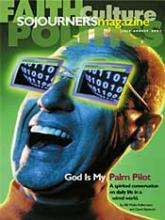"In every generation each of us ought to feel as though we had personally gone forth from Egypt." That central line from the Passover service, which recounts the Jewish exodus from slavery into freedom, has always echoed deeply within me. Growing up Jewish in Virginia in the 1960s, I felt a certain kinship with my black classmates and an understanding with the African-American boys in my newly integrated Boy Scout troop.
At the time I couldn't articulate it, but it was a shared empathy with those unfairly discriminated against because of their minority status, because of their differences. As the child of a father who fled Nazi Germany and the grandchild of immigrants fleeing poverty and discrimination in Eastern Europe, the spiritual qualities and outlook of my black acquaintances rang a strong, mournful note in me; the deep wail of the blues resonated with the Jewish krekhs, the haunting cry heard in Jewish poetry and music.
Kinships like this resulted in the historic alliance of Jews and blacks in America during the civil rights struggle. From the founding of the NAACP in the early 1900s to the Freedom Riders of the 1960s, many Jewish and African-American activists worked hand in hand for common goals. After the triumphs of the civil rights era, the alliance frayed. Martin Luther King Jr.'s death, the emergence of the Black Power movement, Jewish flight to the suburbs, and the malaise of the post-Vietnam era all contributed to this parting.
Seven years ago I got a call from my rabbi, Jack Moline of Agudas Achim, in Alexandria, Virginia, that an organization was forming in Washington, D.C., to promote cooperation and dialogue between black and Jewish teenagers. I decided to get involved—tikkun olam (healing the world) is the foundation for Jewish ethical behavior. I offered my services as a photographer and began documenting the program that emerged, Operation Understanding D.C.
Read the Full Article

